Wikipedia has this to say:
Ratanakiri is sparsely populated; its 150,000 residents make up just over 1% of the country's total population. Residents generally live in villages of 100 to 300 people. Ratanakiri is among the least developed provinces of Cambodia. Its infrastructure is poor, and the local government is weak. The vast majority of Ratanakiri's population engages in subsistence agriculture. Health indicators in Ratanakiri are extremely poor, with nearly one in four children dying before age five. Education levels are also low; three quarters of the population is illiterate.

Knowing that western delights would soon be almost nil we stocked up on western products at 7am in the morning before boarding the bus. It became clear at the bus station that the bus was actually a small mini bus crowded with Khmers. We got on to cries of delight from the Cambodians “Barang” [Foreigner!]. The Cambodians then proceeded to talk about us for the next 10 hours in Khmer without any shame to the fact that we might be able to understand.
The route would take us through
Kratie and Stung
Treng before turning off for
Banlung the province’s capital city. The journey was
ok to begin with due to the lack of Khmer Karaoke which on a normal bus would be played at full volume. But, then the man next to me started to encroach on to my space... and the men behind me didn't realise they had to keep the windows shut for the air con to work and the Cambodians started eating in the confined space with their mouths open and no one appeared to have showered for a while.... and so it went downhill from there.
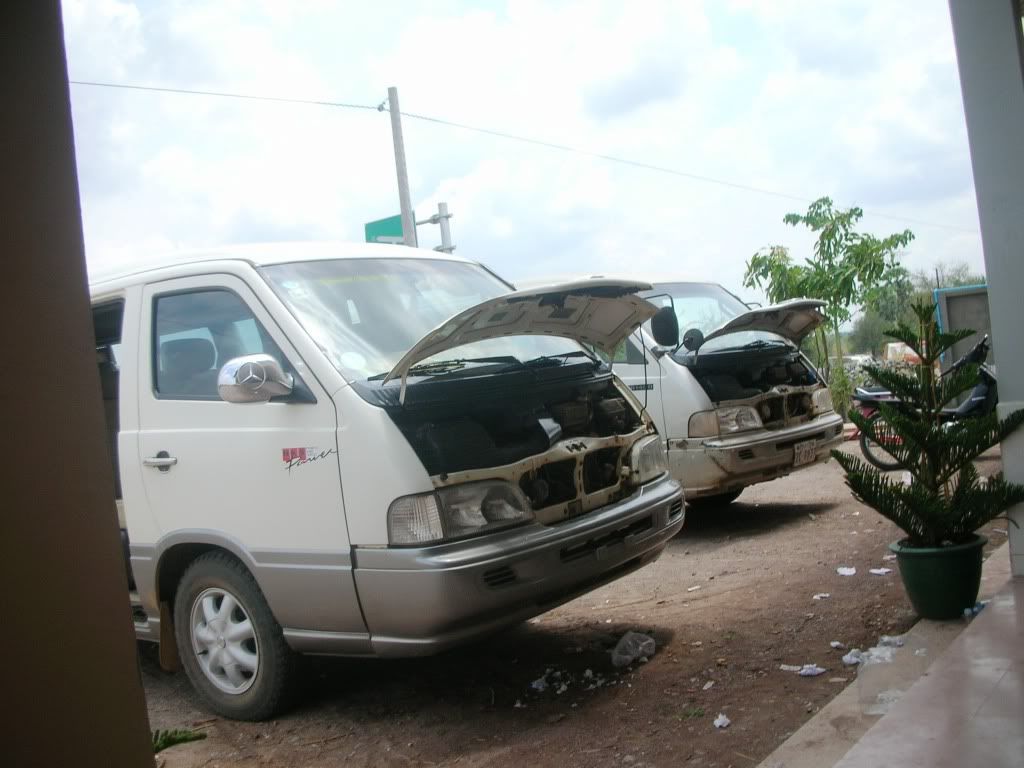
Our luxury transport- open the bonnet to cool the engine!
Our first stop was a “service station” somewhere in the province of Kampong Cham. The service was typical: small children selling fruit, older people selling fried bugs and toilets that aren’t the best. A rarity at this top were the broaches the children were wearing – Absolutely massive tarantulas. I tried not to show my utmost horror as these creatures crawled over the kids as they pointed it out to me an said "spider". Ugh! Other stops were necessary on the way to stock up on fruit/bugs/rice/toilet. Khmer buses like to stop a lot (say once every hour) and this journey was no exception.
We took an interesting shortcut to Kratie along a road with a fantastic view over the fields and where families were drying out what looked like large wood chips in huge quantites by the side of the road. Bright orange corn cobs seemed to be one of the main crops as many houses had it stacked up. Eventually we hit Kraite, then finally Stung Treng. We then turned onto another unseal led road. The road was amazingly so red with clay and the area remained green and jungle like despite the dry season. The houses were typical Khmer houses on stilts. It felt very isolated - These people were 10 hours away from Phnom Penh but light years away in terms of development.

Stunning sunsets over the jungle
Eventually we made it to Banlung. Just like the wild west - Red and dirty dust billowed from the unsealed roads as large trucks thundered in and out. Everything else very understated and quiet. Thankfully our accommodation was amazing. Yaklom Hill Lodge is pretty much a nature reserve where you stay in amongst the jungle in your own cabin. Fantastic but the sounds of the night were so loud! With the chirruping of the cicada (more like a drill/machine gun sound) combined with the calls of a large lizard sharing our room it wasn't quiet at all!

Against warnings of our insurance/mothers/own minds we hired a moped (I was the driver, naturally, having a driving licence would just be rude in Cambodia) to explore the area. Just outside Banlung there is a very beautiful lake (Yaklom). It was formed by a volcanic eruption almost 4,000 years ago. Its up to 50 metres deep and is 800 metres in diameter and a walking path around it. After the lake we made our way through ethnic minority villages to a waterfall - Kachang Waterfall - Sadly, as it is the dry season the usually large and impressive waterfall was not stunning but did provide a cool shower for me. While I was in the water a group of Cambodian men arrived. I had just enough time to change while they ran off to get their mates to have a look at the barang with hardly any clothes on!
Yaklom Lake and a dusty driver
Zoooom
Ratanakiri has many ethnic groups and we did a day trip on the river to visit a couple of the villages. First we had to get to Von Sai a tiny town with mainly ethnic Chinese people. The difference between the town and a normal Cambodian town was striking - All the shops were well ordered and pretty much as spotless as they could get. Then a boat trip down the river to 3 villages. The first was an ethnic Tampuan tribal village. The guide took us to their interesting cemetery and also I got to try 3 different pots of rice wine. Given that the wine is made from the river water its generally advised that you don't try it but it was too tempting! The Chinese village was spotless with a basketball court and a shed designated to charge the villages batteries. Our boat man's house was at this village - His house had a big satellite dish!

Cashew nuts growing inside their fruits.

Sugar Cane juice maker in the Chinese Village

Monks on the river

The tribal village cemetery. Those with merit have statues and elephant tusks carved out of wood on their grave to help guide them to their next life


This woman had gone against tribe traditions by having a husband but not telling the village or having a traditional ceremony - So, to punish they made this pregnant woman statue for her grave.

The tribal village
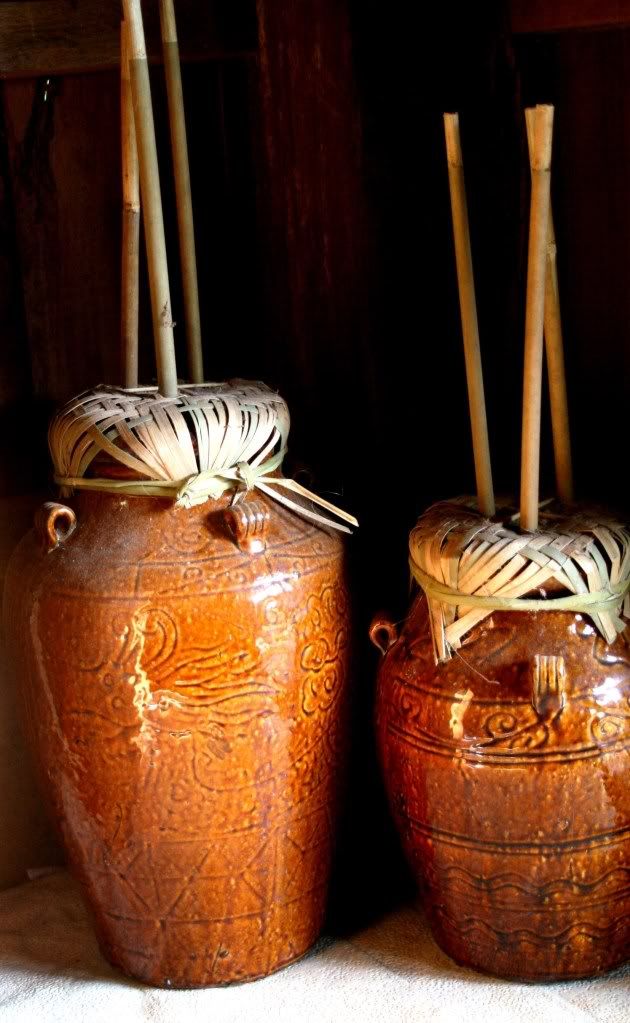 Rice wine is kept in jars like this and drunk through the bamboo "straws"
Rice wine is kept in jars like this and drunk through the bamboo "straws"
On the way back we decided to upgrade to a private car!!!!! We stopped for a carwash midway. The car was caked in thick red mud from a journey in the rain on the clay roads (!) The bonus were these children who thought me and the camera were absolutely hilarious!!








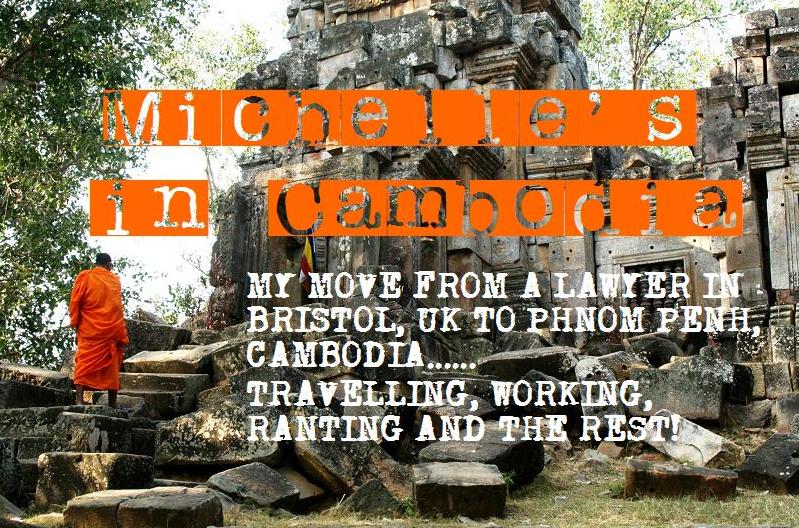





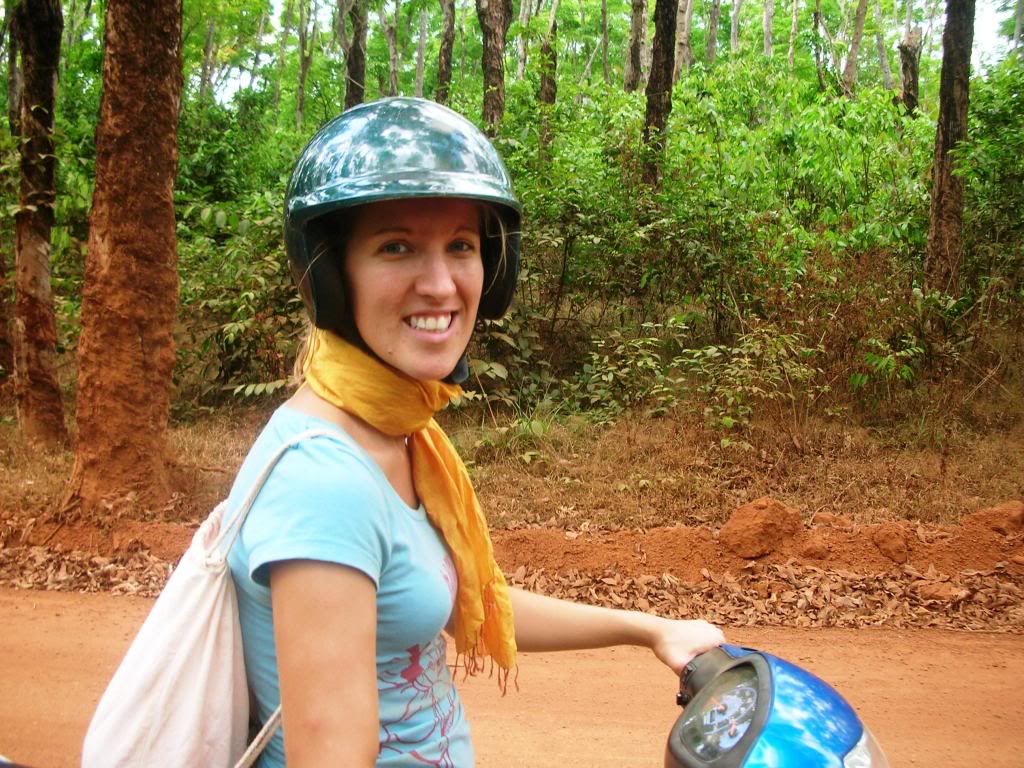





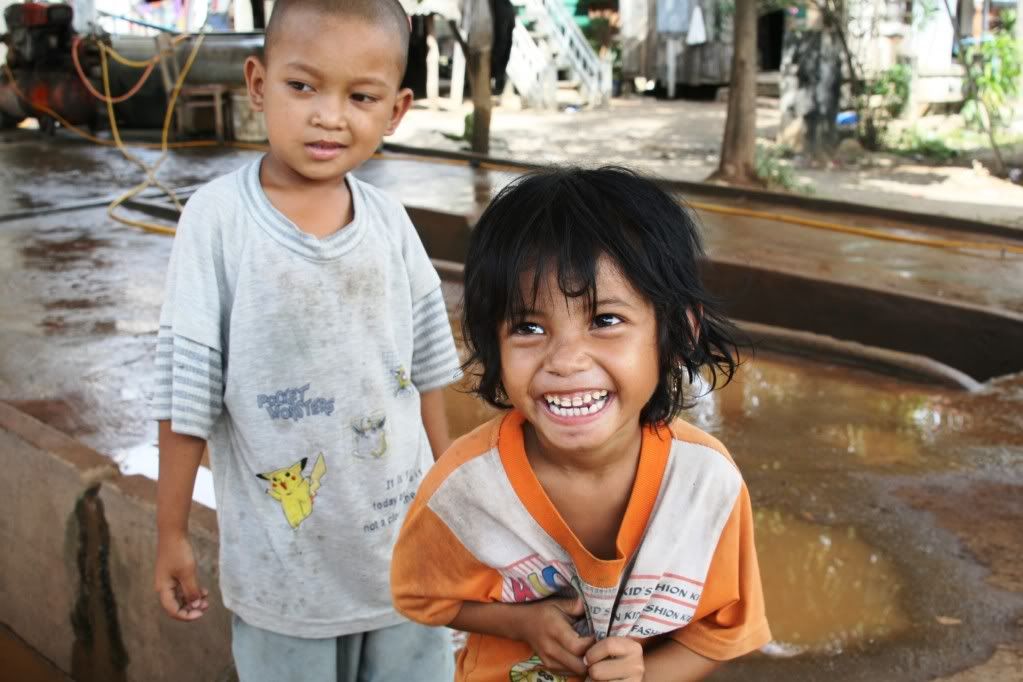
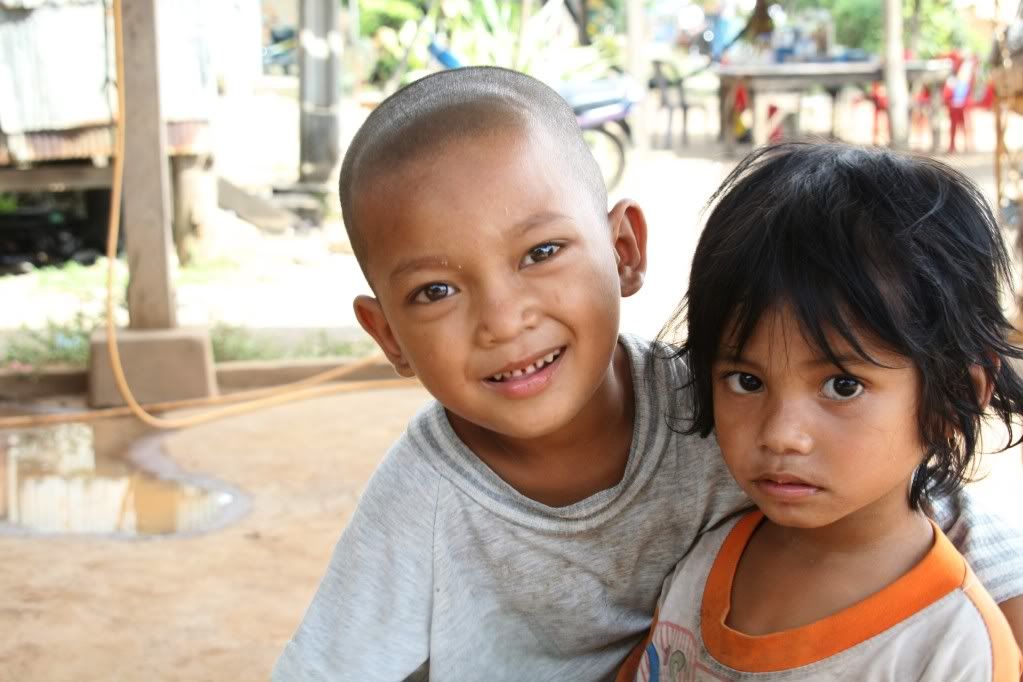







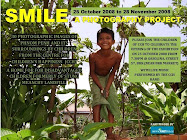
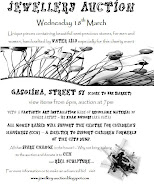















1 comment:
Hi, My name is Nat Adams and I'm a researcher with an organization called World Faiths Development Dialogue. We are releasing a report on indigenous spiritual systems in Cambodia and would love to use one of your photographs for the report's cover. We would of course give you photo credit. If you could email me at nathaniel.adams@wfdd.us we could discuss the possibility. Thanks and hope to hear from you soon.
Post a Comment